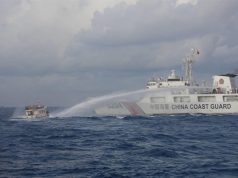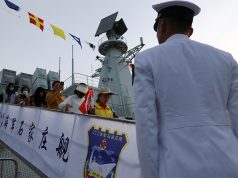Just before the weekend, a Xinhua News dispatch from Nanjing introduced to the world a monstrous Chinese vessel the size of which has never been seen. Dubbed by some as a Frankenvessel, it’s deck is the size of nine basketball courts.
Touted as the largest cutter-dredger of its kind in Asia, it is named Tian Kun Hao.
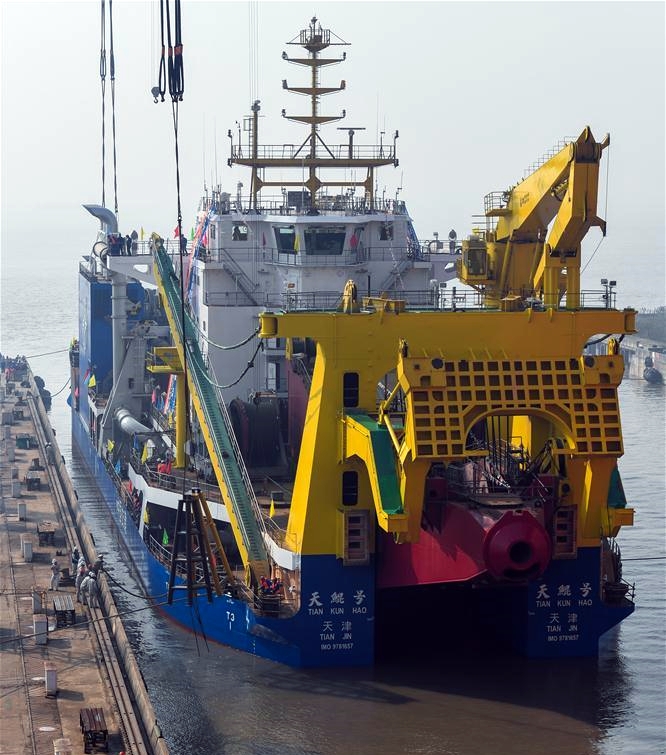
The ship was funded and designed by Tianjin Dredging Co. Ltd. in collaboration with China Communication Construction Co. Ltd. (CCCC) and built by Shanghai Zhenhua Heavy Industry Co. Ltd.
The Tian Kun Hao started water testing, going through mooring and sailing paces, in east China’s Jiangsu Province Friday.
It is 140 meters long, with the capacity to delve and dredge out 6,000 cubic meters of solid material per hour, digging 35 meters into the sea floor. The cutter/suction part is at the stern, and the discharge goes out near the bow section.

This ship is a larger sister of one that China has used to dredge in the South China Sea, off the western edge of the Philippine archipelago to build up artificial islands on atolls, islets and reef formations.
It is expected to be officially put into service this coming summer.
See also:
Philippines to keep wary eye on new Chinese dredger
More than massive
To use the word massive is to make an understatement in describing this ship.
The juggernaut can dredge an area the size of a soccer field one meter deep in just one hour, according to Wang Jian, deputy chief engineer of CCCC Tianjin Dredging. Or, corresponding to digging three standard swimming pools in an hour.
No matter that the sea floor is made of rocks, the vessel’s 6,600-kilowatt dredging equipment can mince hard objects and pump the silt into the vessel, where it can be piped out as far as 15 kilometers away.
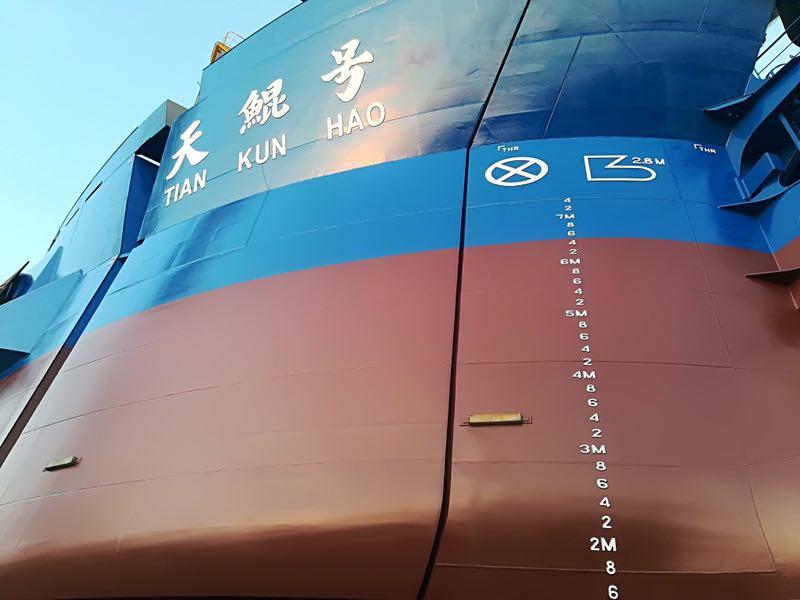
“Tian” “Kun” “Hao”
The meaning of the three Chinese characters:
Tian is “sky”.
Kun denotes a huge mythical fish that becomes a gigantic bird whose wings are like clouds all over the sky.
Hao is, literally, “number” or “mark, or designation”.
Taken together, they pertain to “The Ship Called Sky Kun”. So very apt for a super machine that has been dubbed “The Magic Island Maker” or “Asia’s most powerful island maker”.
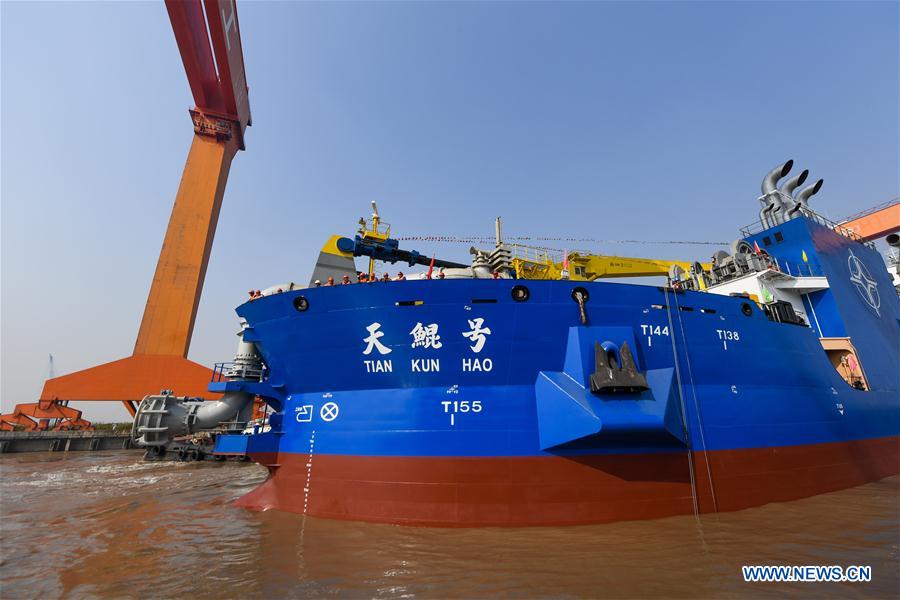
This ship is reputed to be equipped with an advanced global positioning system and, thanks to claimed automatic controls, can be operated with just a nominal crew complement, in effect allowing it to dredge in one spot and refill in another at a faster speed and greater efficiency than conventional operations.
Great Wall of Sand: Feverish island building
Beijing’s feverish island-building spree has been undertaken in parallel with its bellicose territorial claims in the South China Sea.
China has poured cash into its dredging industry over the past decade, with an estimated 200 vessels built since 2006, making it one of the world’s biggest manufacturers of dredgers.
It comes at no small cost, like “dumping money into the sea”. By one estimate, the price of building a 5-square-kilometer island 3 meters above sea level is about 30 billion Yuan (US$4.54 billion), considering the cost of conventional sea reclamation, using precast building blocks, as well as shipping in rocks and sand from onshore.
In a paper carried in the August 2015 issue of National Interests magazine, Andrew Erickson, associate professor at the United States Naval War College, calculated that Beijing’s reclamation work had resulted in 2,900 acres (more than 1,100 hectares) of new land over a period of roughly 20 months, from early 2014 to August 2015.
Meanwhile Vietnam has reportedly reclaimed 32 hectares, Malaysia 28, the Philippines 6, and Taiwan 3 over various lengths of time.
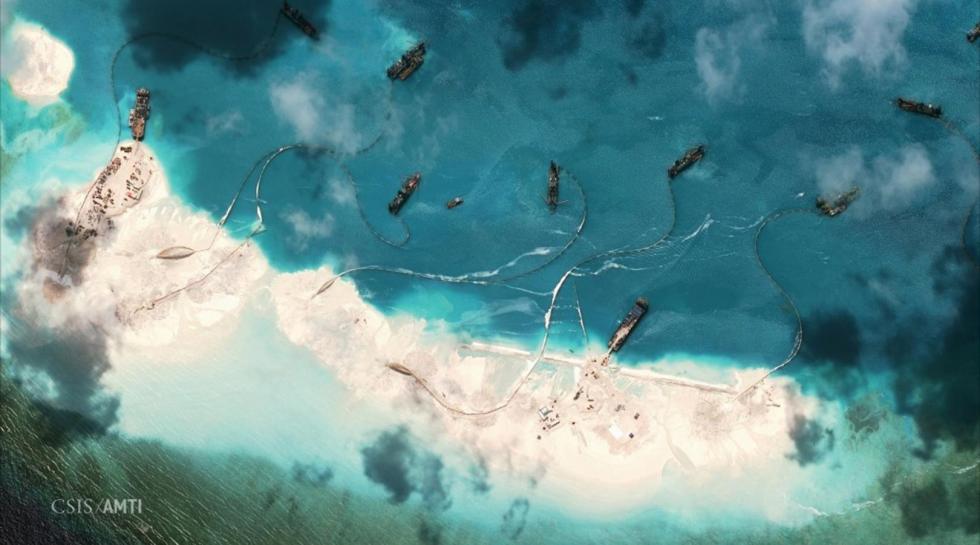
The photograph above shows just how many dredgers were simultaneously at work at one point on Mischief Reef, an atoll surrounding a large lagoon in the Southeast of Dangerous Ground in the eastern portion of the Spratly Islands in the South China Sea. It is located just 216 kilometers (130 nmi) west of Palawan Island.
China, therefore, with its Great Wall Of Sand undertaking, has managed to create more than 17 times more land in just 20 months than all of the other claimants combined over the past 40 years, accounting for 95% of all artificial land in the Spratly island chains, according to Erickson.
But “China will abide by the Code of Conduct in the South China Sea … and won’t use the dredger to expand its artificial islands,” Li Jie, a Beijing-based military expert, has claimed.
Floating nuclear reactors?
A report published by the South China Morning Post indicated that China has announced plans “to bolster its maritime nuclear capabilities” with “the development of floating reactors in the South China Sea and beyond” through state-owned China National Nuclear Power in cooperation with Zhejiang Zheneng Electric Power, Shanghai Guosheng Group, Jiangnan Shipyard and Shanghai Electric.
It is therefore not so far-fetched to observe that the joint venture “will seek to strengthen China’s nuclear power capabilities in line with its ambitions to become a strong maritime power.”
Collin Koh, a maritime security expert at Nanyang Technological University in Singapore, said that, while the Tian Kun Hao could be used to help small islands deal with rising sea levels caused by climate change, nations with rival claims in the South China Sea might be concerned that it suggested Beijing was preparing to reassert its dominance in the disputed waters. If the floating nuclear rector narrative is to come true, an adequate support complex in the South China Sea, no matter how far from the mainland, would be a necessity.
Corollary to this development is China’s “Belt and Road Initiative”, which aims to boost trade and infrastructure links with nations across Asia and Africa, and so the technological investment can conceivably be of great use in nearby areas, such as the South China Sea.
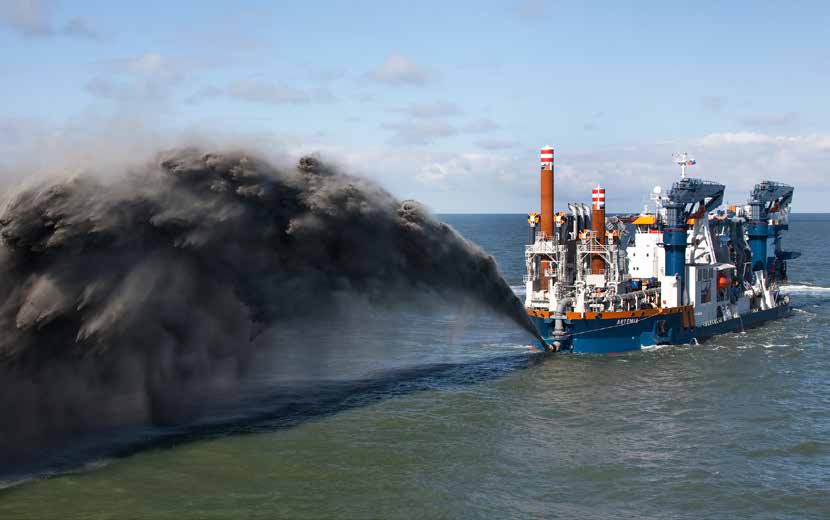
Cutting, Dredging in a nutshell
A Cutter Suction Dredger (CSD) is a self-propelled or stationary vessel that uses a rotating cutter head to loosen the material in the hard ground (so-called cutting).
Below is a photograph showing the business end of a typically-configured cutter dredger.
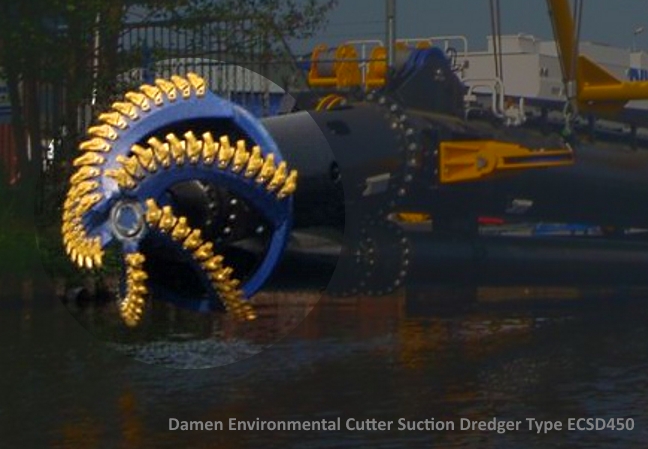
The dredger is equipped with a rotating cutter head, for churning the seabed and fragmenting hard soils or rocks. The sediment is sucked up by means of dredge pumps, and discharged through a pipeline to the deposition site.
Watch this corporate video depicting basic working principles of Cutter Suction Dredgers below, as posted on YouTube by Jan De Nul Group:




